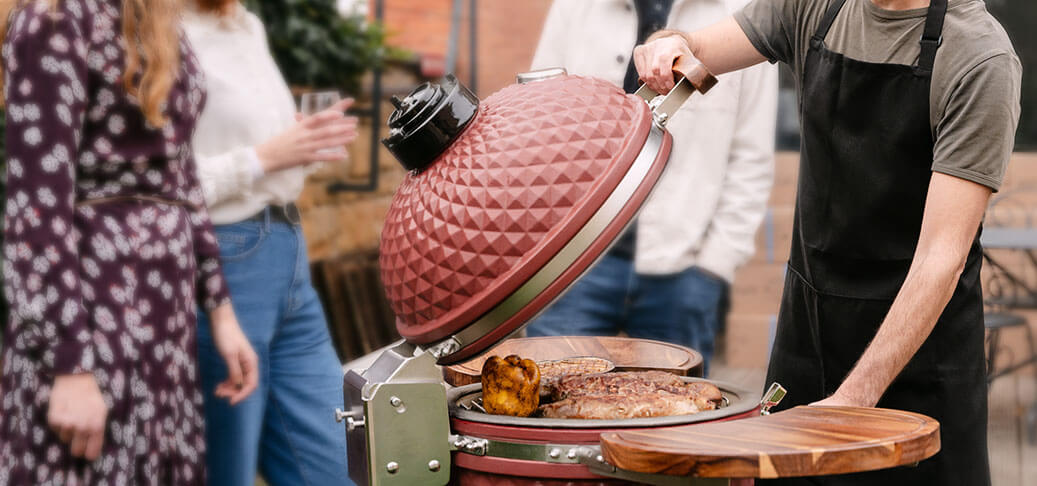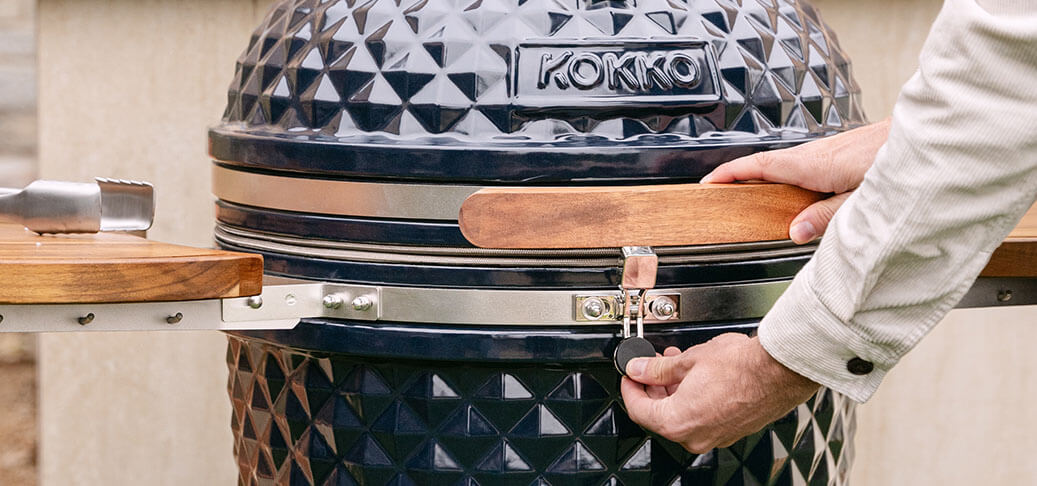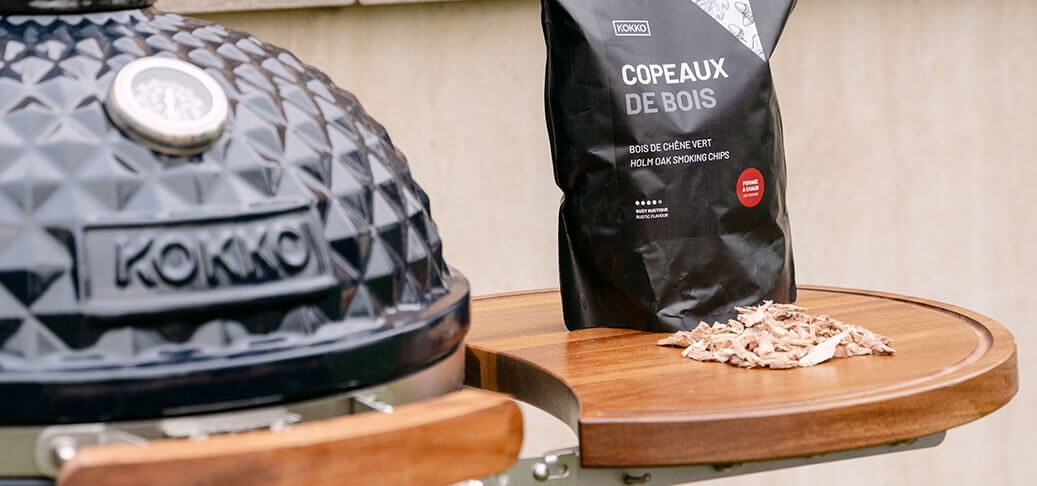
Barbecuing prime rib is an art form that deserves special attention. A quality prime rib can be recognized first and foremost by its marbling, those fine infiltrations of fat that guarantee exceptional tenderness and flavour .
To obtain a perfectly cooked piece, it's essential to master not only cooking techniques, but also meat preparation.
In fact, a prime rib that has been matured for at least 3 to 4 weeks will develop more complex aromas and incomparable tenderness. Temperature also plays a crucial role - for perfect cooking, we recommend using a probe thermometer to check the core temperature:

Whether it's an 800g piece for 4 to 6 people, or a more imposing 1.2 kg, this article will guide you step by step to an inratable recipe for barbecued prime rib.
Choosing the right prime rib for the barbecue

When it comes to successfully barbecuing prime rib, the choice of meat is crucial. There are a number of criteria for selecting a quality cut that will guarantee an exceptional taste experience.
How much meat to allow for the number of guests
Prime rib is generally a generous cut, ideal for a convivial meal.
| Quantity of meat (including bones) | Little eaters | Big eaters |
| 250g-300g | 2 persons | 1 person |
| 700g-800g | 5 people | 3 persons |
| 1kg | 6 persons | 4 people |
For an adult, count between 250 and 350 grams of bone-in meat. A rib of beef weighing around 1 kg is ideal for 4 to 5 people.
Don't hesitate to ask your butcher for advice: he can adjust the weight to suit your guests' appetites.
Recognizing well-marbled meat
Marbling, the fine infiltration of fat into the muscle, plays an essential role in the taste of the meat. A well-marbled prime rib will be juicier, more tender and more flavorful. To recognize it, look closely at the white marbling running through the red flesh. The denser the marbling, the better the taste. Choose meat with a bright red colour and a firm texture to the touch.
Meats particularly renowned for their marbling are :
-
Aubrac
-
Charolais
-
La Limousine
-
The Angus
The importance of beef maturation
Maturation is an essential process that transforms muscle into meat. A prime rib that has been matured for at least 3 to 4 weeks will develop more complex flavors and incomparable tenderness. This natural process takes place in a room between 1° and 3°C, with a controlled level of humidity. During ripening, two phenomena occur:
-
Proteolysis, which breaks down proteins and tenderizes meat,
-
Lipolysis, which develops aromas.
This process also explains why matured meats are more expensive, as they can lose up to 30% of their weight in water.
Ideal thickness of butcher block for successful cooking
The thickness of the prime rib has a direct influence on its cooking success. For barbecuing, opt for a thick cut, between 4 and 8 cm. This thickness will enable you to sear the outside perfectly while preserving a juicy, flavourful heart, depending on your cooking preference.
Prepare meat before cooking
Preparing prime rib for barbecuing is a fundamental step in guaranteeing flavourful results. A few simple but essential steps will enhance the meat's intrinsic quality and optimize its cooking.
Bring meat to room temperature
Before cooking, it's essential to remove the prime rib from the refrigerator. This step, often neglected, avoids thermal shock that would render the meat less tender. According to the experts, the ideal time is between 30 minutes and 1 hour before cooking. For particularly thick cuts, some butchers even recommend up to 2 hours at room temperature. This waiting time ensures more even cooking and preserves all the meat's tenderness by preventing it from stiffening on contact with heat.
Simple seasoning: salt, pepper, oil
When it comes to seasoning, simplicity is the key to preserving the meat's natural flavour. Salt is the essential element, but it's always best to add it after cooking.
In fact, red meat should never be salted before cooking, to avoid hardening.
The same applies to pepper, to prevent it from cooking and developing a bitter taste.
In addition, a light brushing ofolive oil on all sides of the meat ensures better caramelization. For those who prefer more flavor, a simple marinade with aromatic herbs such as thyme and rosemary can be considered.
Use the right utensils (tongs, probe, oiled grid)
The choice of utensils is crucial to the success of your barbecued prime rib. Use tongs rather than forks to handle the meat. In fact, pricking the meat will cause a loss of juices, making it dry and less tasty.
The use of a temperature probe is also a major advantage for perfect control of core cooking.
It should be positioned at the heart of the meat, pricking from the side of the piece. The ideal core temperature for prime rib is 55°C.
Finally, don't forget to lightly oil the grill before placing the meat on it, to prevent sticking and facilitate handling.
Direct vs. indirect cooking: when and how to use them
Direct cooking involves placing the meat directly on the grill over the coals, ideal for quickly searing the outside.
Indirect cooking, where the meat is placed on a heat deflector, is best suited to thick cuts.
For prime rib, start by cooking directly for 2-3 minutes on each side to form a nicely grilled crust, then switch to indirect cooking to finish gently.
This method guarantees meat that's crispy on the outside and melt-in-the-mouth on the inside.
Cooking time according to weight (1 kg, 2 kg, etc.)
| Rib weight | Slice thickness | Cooking time (rare) |
| 500g | 3cm | 12min |
| 500g | 4cm | 16min |
| 1kg | 3cm | 24min |
| 1.2kg | 3cm | 28min |
For perfect doneness, allow around 12 minutes per pound (500g) of meat for a rare rib. Thus, a 1 kg piece will require about 24 minutes in total. For a 1.2 kg rib, allow between 25 and 35 minutes, depending on the desired level of doneness. Don't forget that time also varies according to thickness: for a 3 cm thickness, allow 12 minutes in total, versus 16 minutes for a 4 cm thickness.
Core temperatures for each cooking level
Use a meat thermometer for accurate results:
-
Blue: 45-50°C
-
Rare: 50-55°C
-
Medium: 55-60°C
-
Fully cooked: 62-70°C
Pro tip: To avoid overcooking, remove the meat 8-10°C before the desired final temperature, as it will continue to cook while resting.
Use flavoured butter at the end of cooking
To enhance your prime rib, prepare a butter flavored with fresh herbs:
-
100g softened butter
-
bunch of fresh herbs (parsley, chives, thyme)
-
a dash of lemon juice
-
a pinch of salt
Mix the ingredients and chill for 30 minutes before use. Some chefs even offer variations with Roquefort cheese and walnuts, or tomato confit and Espelette pepper.
Place a dab of this butter on hot meat just before serving for an explosion of flavor.
Resting meat after cooking
The step that follows the perfect barbecuing of a prime rib is often overlooked, even though it is crucial to the final quality of your meat.
Properresting and carving transforms a simple prime rib into a culinary masterpiece.
Why rest meat
After removing your prime rib from the barbecue, it's imperative to let it rest in a warm place. This crucial step allows the temperature to even out and the meat to relax.
Indeed, during cooking, the heat causes the fibers to tighten, displacing moisture to the center of the piece. Resting allows the muscle fibers to relax progressively.
For prime rib, experts suggest that the ideal resting time is between 20 and 25% of the total cooking time. So, for a 100-minute cooking time, allow around 20 minutes for resting.
To preserve heat without further cooking, you can lightly wrap your prime rib in aluminum foil, without closing it hermetically. Ideally, place it on a rack for optimum air circulation.
How to cut prime rib
To carve your perfectly rested prime rib, you'll need a sharp, long-bladed knife and a large cutting board.
There are three main stages in the cutting process:
-
Remove the meat from the bone by standing the rib upright and making a precise incision along the bone. Gently follow the curve of the bone to remove all the meat.
-
Remove excess fat as desired,
-
Cut the meat into thick slices of about 2 centimetres, slightly bevelled. To preserve all the juiciness, use a fluid back-and-forth motion.
-
Essential point: never prick the meat with a fork during cutting. The fork should only hold the rib in place when laid flat.
Side dishes for your barbecued prime rib

A magnificent barbecued prime rib deserves the right accompaniments to create a truly memorable meal. The choice of garnishes and final seasonings will enhance the exceptional flavour this piece of meat.
Ideas for simple, flavourful accompaniments
Classic accompaniments perfectly enhance the rich flavor of prime rib. Among the most popular options, potatoes come in a variety of forms: en papillote with a drizzle of olive oil and fresh herbs, oven-roasted wedges with rosemary, or a fine brunoise with garlic. These starches are ideal for absorbing the meat's juices.
For freshness and lightness, grilled vegetables are an excellent choice. Sliced eggplant, zucchini and peppers, brushed with olive oil and cooked directly on the barbecue grill, develop smoky flavors that harmonize perfectly with the meat.
A simple green salad dressed with a slightly tangy vinaigrette also offers a refreshing contrast.
Click here to discover all kinds of mushroom recipes to accompany your piece of beef. You won't be disappointed. Tips and explanations of the benefits of mushrooms, your ally for a great chef's tasting and to impress your guests:
Barbecuing mushrooms: tips & recipes
Final seasoning: fleur de sel, pepper, herbs
The final seasoning of your prime rib is the ultimate touch that will enhance its taste. First of all, use fleur de sel, whose crunchy crystals add a delicate saltiness and an interesting texture in the mouth. Sprinkle it lightly over the sliced meat just before serving.
Freshly ground pepper, preferably in mortar-cracked black peppercorns, reveals far more complex aromatic notes than pre-ground powder. A coarse grind preserves all its aromas and offers a pleasant contrast in texture.
Finally, fresh herbs add an extra aromatic dimension. Thyme, rosemary and sage can be used during cooking, while finely chopped flat-leaf parsley , chives or tarragon can be sprinkled over the meat just before serving. For a more daring touch, a herb and garlic butter drizzled over hot meat creates an instant sauce rich in flavor.
Conclusion: Barbecuing prime rib: the keys to successful cooking
From the selection of a well-marbled piece to the two-stage cooking process (direct then indirect), each step has an influence on the final result. Room-temperature meat, a well-caramelized crust, a juicy center and awell-respected rest: these are the secrets of a melt-in-the-mouth, flavorful rib-eye.
Add a seasonal garnish, and transform your barbecue into a true moment of sharing. With these tips, barbecuing prime rib becomes an art for everyone.






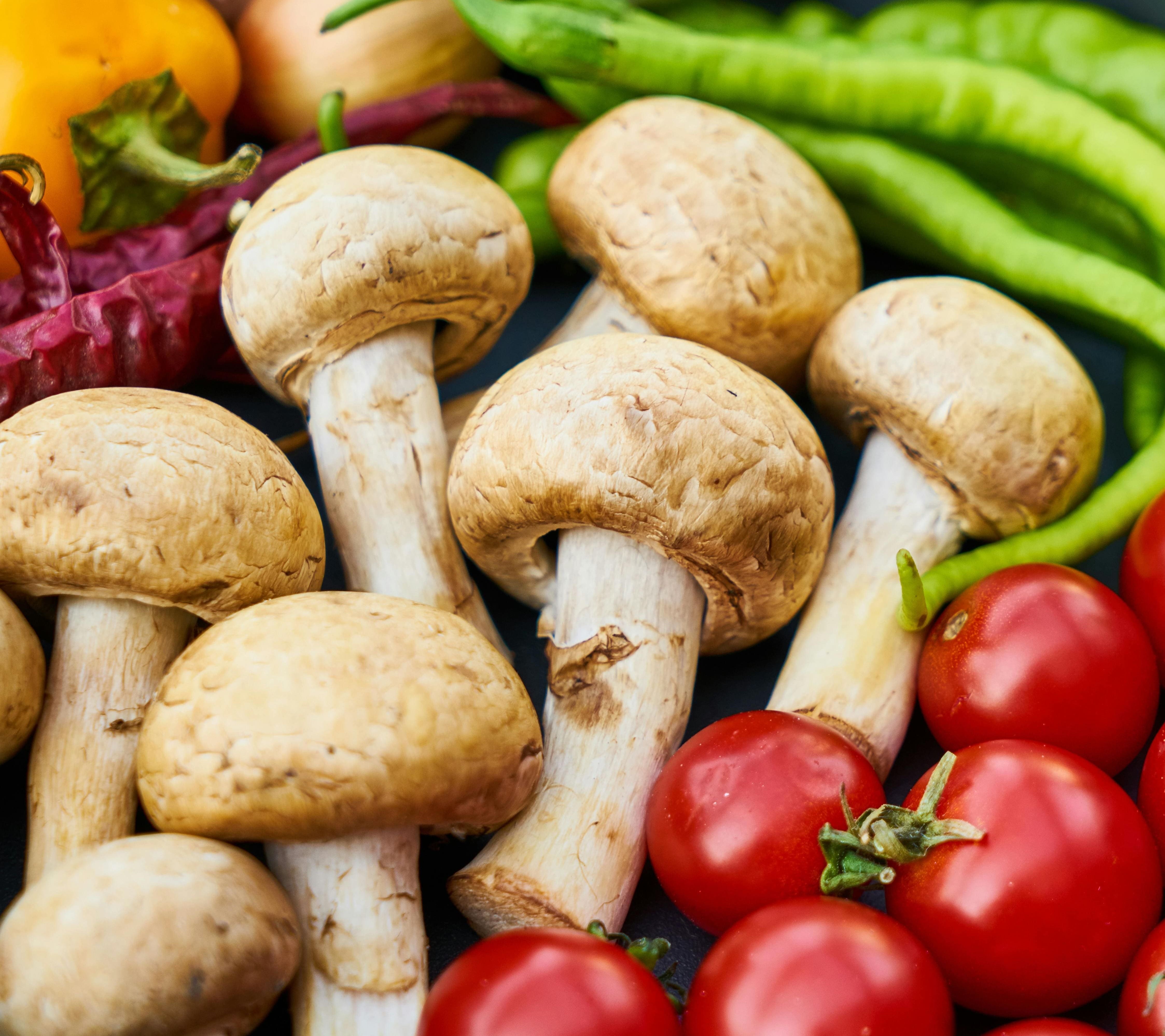
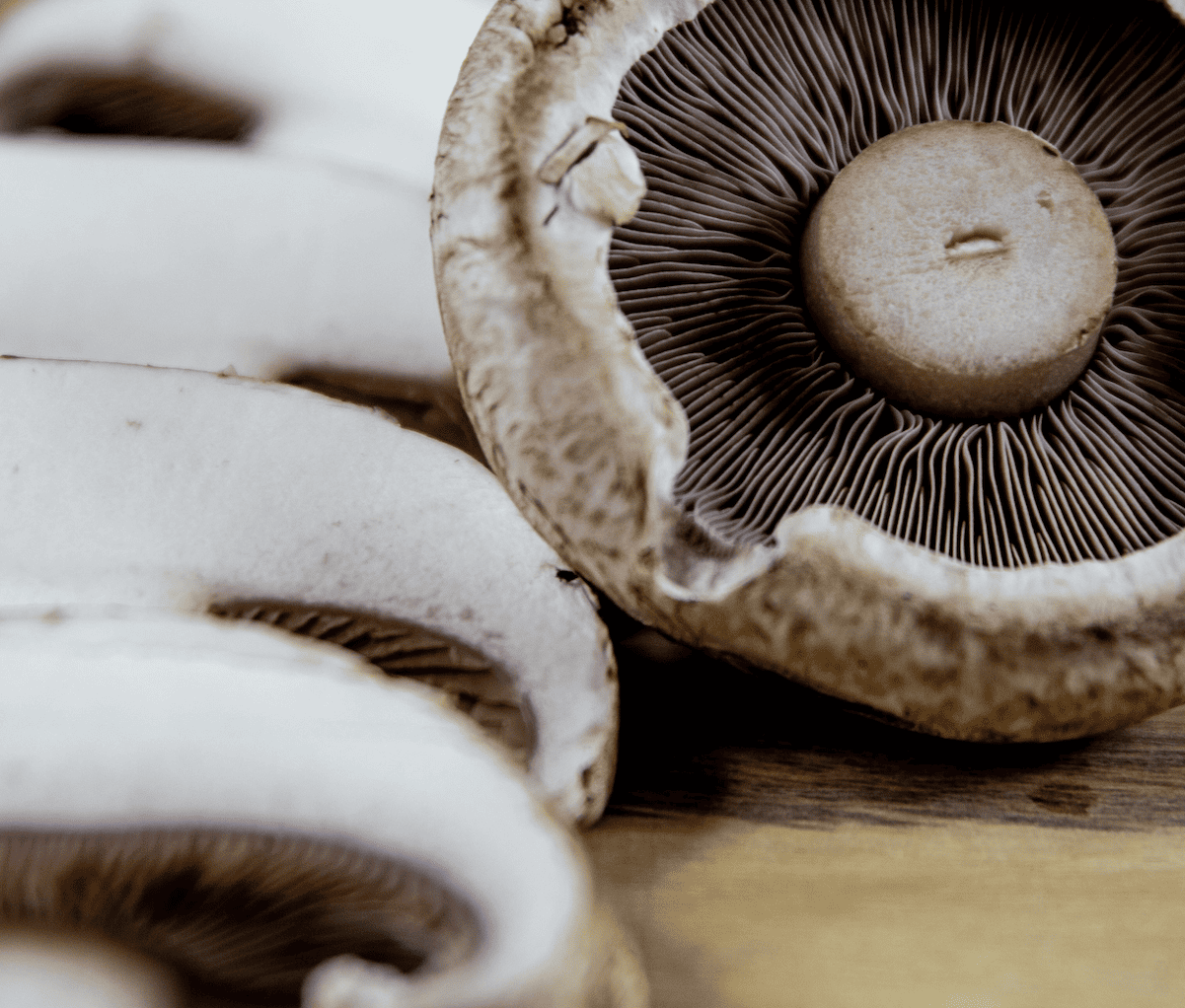
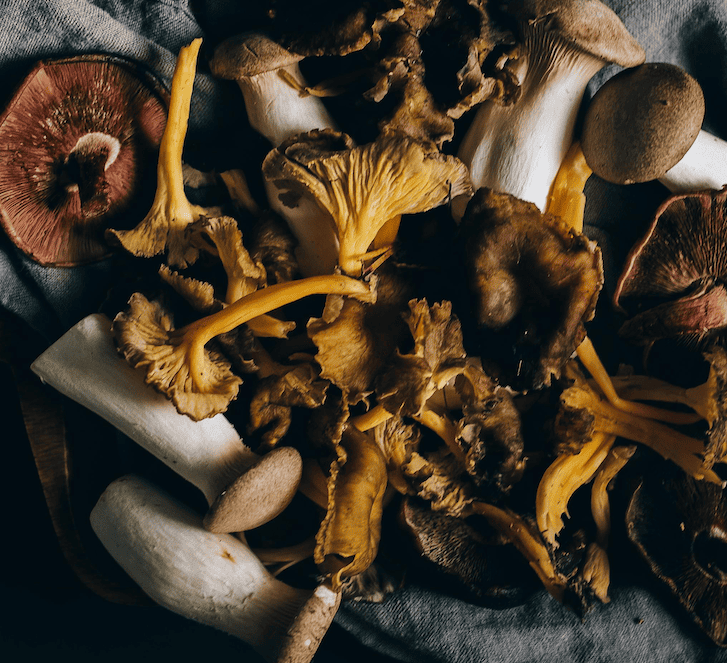
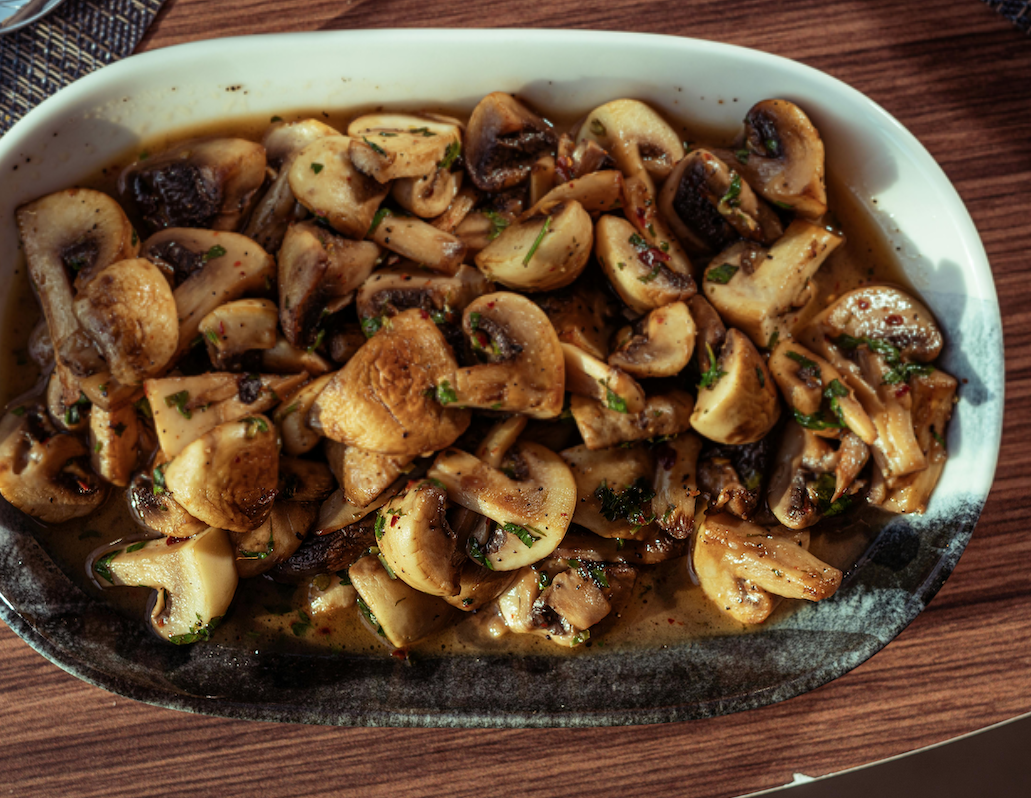
.png)
